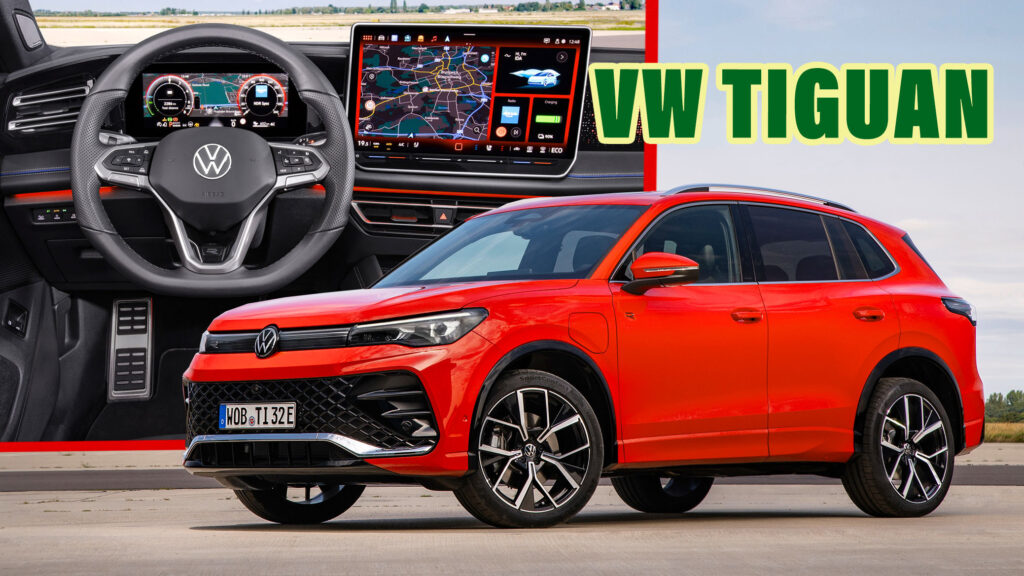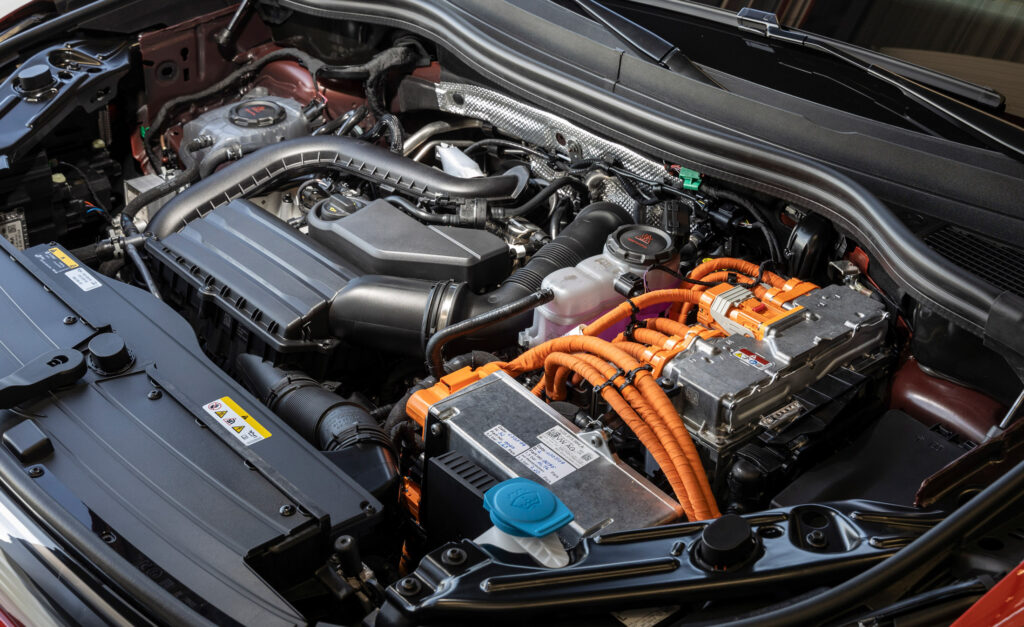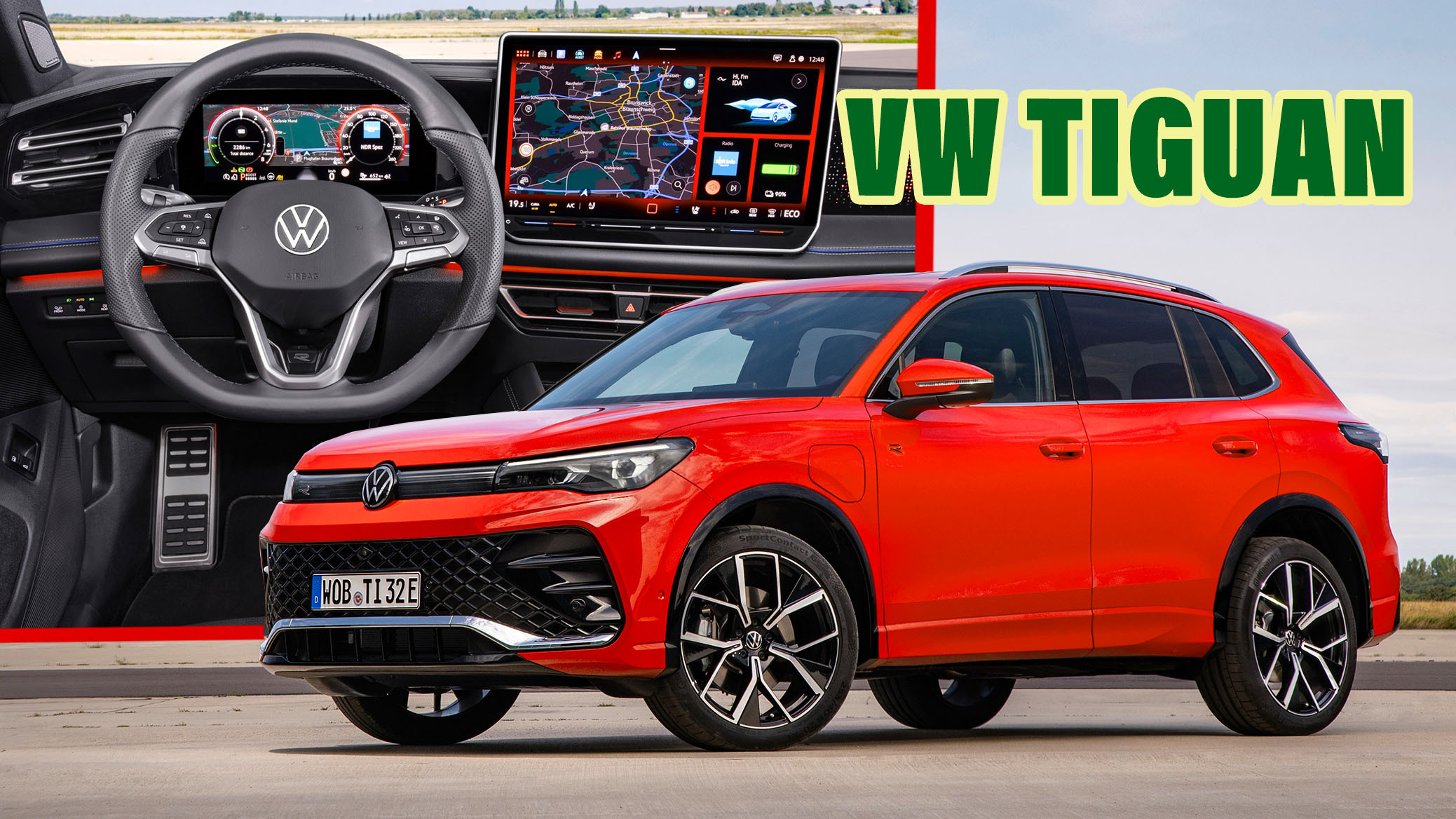The 2024 VW Tiguan gets a curvy new bodywork, the latest MQB evo platform, a radical interior overhaul and PHEV options with double the battery capacity
3 hours ago

VW is making some major changes to its lineup for 2024. Last week we got our eyes on the Euro-market Passat, which goes wagon-only in its latest incarnation, and this week we’ve got all the details on the new Tiguan. The Tiguan you see here in these pictures is only for the European market where it directly replaces Europe’s outgoing standard-wheelbase, two-row Tiguan.
As with the current Tiguan, U.S. buyers will only be offered a long-wheelbase model with the option of a third row of seats that will make its debut next year. Earlier reports suggested this would be an entirely new vehicle based on the next generation of the Chinese-market Tayron, but now VW of America says U.S. dealers will sell a stretched version of this new Tiguan. We’ve asked for clarification and will update the story when we hear back.
If that is the case, European buyers who can’t live without that third row should also be offered the stretched model in addition to the shorter SUV you see here. Enough with the preamble: let’s dig into the specs of this new rest-of-the-world Tiguan.
New platform, new look
advertisement scroll to continue
Related: 2024 VW Tiguan A Sign Of Things To Come After Golf Mk8 Infotainment “Damaged” Brand
We’ve already touched on the newfound curves, which give the car a warmer, more organic look, not to mention a more muscular stance that brings it closer to the bigger Touareg thanks to flared rear fenders and a pinched waistline. It doesn’t move much closer to its big brother in terms of size, though. The new Tiguan switches to VW’s modern MQB Evo platform, as used by the Golf, Passat and Audi A3, but the 2,681 mm (105.5 inches) wheelbase is virtually identical. VW does at least promise a little (10 mm / 0.4-inches) extra rear legroom and says the 648-liter (22.9 cu-ft) trunk is up by 33 litres (1.2 cu-ft).
There’s a new light bar stretching across the rear of the car and another one at the front, where it forms a grille that is narrowed to the point that the VW roundel spills over it, top and bottom, just like on the Mk8 Golf. The lower grille features three horizontal chrome bars on regular Tiguans (see pics of the green car at bottom of the article), but sporty R-Line models (red car) get a diamond-pattern mesh, an even angrier mouth and black arch trims.
Interior borrows from VW’s ID. EVs
The interior has had an equally major rethink. The current model’s mid-2010s dashboard layout with its in-console infotainment system was logical and intuitive, but it was also looking ancient, so VW has junked the lot for a new dash with a huge tablet touchscreen that features configurable menu bars at the top and bottom of the screen to make up for the fact that there are no hard keys.
It’s the same kit we’ve already seen on both the new Passat and its electric ID.7 cousin, and like those cars the Tiguan also gets physical (rather than touch-sensitive) steering wheel buttons, backlit temperature sliders and a gear shifter on the right hand stalk that frees up console space for phones, wallets and the handsome new rotary controller (with in-built screen) for the media system.
Up to 62 PHEV miles of electric range

If the big interior news is the new touchscreen, the headline act under the hood is the available PHEV hardware that can deliver a solid 62 miles (100 km) of electric range thanks to a battery that’s almost doubled in size to 19.7 kWh. Fortunately, the charging speed has also grown, from 26 to 11 kW for AC top-ups, while DC charging is possible for the first time, though the sluggish 50 kW max means it takes 25 mins to fill from 10-80 percent – the same as some real EVs with five times the range.
There are in fact two PHEVs, both driving the front wheels through an eight-speed DCT and powered by a combination of 1.5-liter turbocharged four-cylinder petrol engines and 114 hp (85 kW / 115 PS) electric motors. But thanks to different ICE tunes, one gives an overall system output of 201 hp (204 PS), while the other serves up a more substantial 268 hp (272 PS).
Mild hybrids and AWD, but not together
A 2.0-liter diesel and another pair of petrol 1.5s, this time mild hybrids, are available for drivers who don’t need to drive meaningful distances on electric power, but still care about economy. The eTSi engines feature variable geometry turbos, cylinder deactivation and 15 kW (20 hp / 20 PS) of 48-volt assistance, giving total outputs of 129 hp (130 PS) and 148 hp (150 PS), and like the PHEVs drive the front wheels, though this time through seven-speed dual-clutch transmissions.
Buyers determined to equip their Tiguans with all-wheel drive, meanwhile, miss out on the efficient little 1.5-liter engines and instead get the tried and tested EA888 2.0-liter petrol motors seen in VW’s such as the Golf GTI. Again, there are two tunes: one with 201 hp (150 kW) and another with 262 hp (265 PS).
Related: VW’s Tayron Going Global, Reportedly Coming To U.S. As The Tiguan And It’ll Be Joined By A Coupe Variant
VW says the AWD cars’ 4Motion hardware has been modified to reduce vibrations, and both the FWD and AWD Tiguans can be optioned with a version of the new DCC Pro adaptive dampers setup already seen in the Passat. The system features two-valve shocks for more comfort and control, and drivers can adjust their operating range using the in-dash Vehicle Dynamics Manager drive mode selector you’ll have seen before in the Golf.
The Tiguan goes on sale early next year in Europe, and we’d expect a base price of around £32,000 / €35,000 (~$37,000). But we may have to wait until close to that delivery time to find out what North America’s replacement for the current Tiguan looks like. Would you buy the new Euro Tiguan over a Toyota RAV4 or Honda CR-V?


